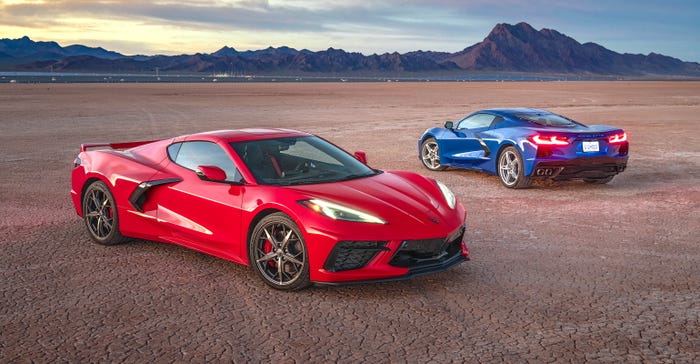JD Power Names the Top 2022 Vehicles in Initial Quality
JD Power finds that while overall quality has dipped, General Motors has surged to the lead.

2022 Chevrolet Corvette Stingray.Image courtesy of General Motors Co.
JD Power’s 2022 Initial Quality Study has named the top new cars for 2022 in terms of buyers' satisfaction immediately following purchase.
This isn’t the report that suggests how long your car will last or how much it will cost in repairs (that's the annual Dependability Study). Instead, it surveys new car buyers to learn about any troubles they encounter in the first three months of ownership.
These troubles aren't necessarily things that broke, only that the buyer wasn’t happy with some aspect of the vehicle’s operation, even when that component is working perfectly. The result is a score showing the number of problems experienced per one hundred cars (PP100)
For 2022, this happened more frequently than in the past, setting a new record for troublesome cars in this Power survey. Nevertheless, General Motors was able to improve its scores, and earned 9 first-place finishes for its models in various segments as well as placing first overall with the Chevrolet Corvette.
“Given the many challenges automakers and their dealers had to face in the past year, it’s somewhat surprising that initial quality didn’t fall even more dramatically,” said David Amodeo, director of global automotive at J.D. Power. "In general, initial quality has shown steady improvement throughout the history of this study, so the decline this year is disappointing—yet understandable. Automakers continue to launch vehicles that are more and more technologically complex in an era in which there have been many shortages of critical components to support them."
Mass market vehicles experience fewer problems than premium vehicles: Mass market brands average 175 PP100, which is 21 PP100 fewer than for premium brands (196 PP100). Premium brand buyers typically purchase more technology in their vehicles, and the added complexity of that tech increases the likelihood of problems. Given the challenging task of launching new vehicles in the current environment, mass-market carryover vehicles are most likely to achieve high-ranking initial quality. “Owners of premium-brand vehicles experience more problems than mass-market vehicle owners, continuing a trend that started in 2016,” Amodeo said. “But some brands, notably Genesis and Lexus, have largely been able to avoid that issue.”
Infotainment systems remain the most problematic area: The infotainment category continues to be the most problematic, with an average of 45.0 PP100—which is 19.5 PP100 more problems than the next-highest category. Six of the top 10 problem areas in the study are infotainment-related, including: Android Auto/Apple CarPlay connectivity (5.8 PP100); built-in voice recognition (4.0 PP100); difficulties with touchscreens/display screens (3.5 PP100); built-in Bluetooth systems (3.4 PP100); not enough power plugs/USB ports (2.9 PP100); and inconsistent audio volume (2.7 PP100).
Battery-electric vehicles (BEVs) and plug-in hybrid vehicles (PHEVs) are more problematic: Owners of BEVs and PHEVs cite more problems with their vehicles than do owners of vehicles with internal combustion engines (ICE). ICE vehicles average 175 PP100, PHEVs average 239 PP100, and BEVs—excluding Tesla models—average 240 PP100. (Tesla models average 226 PP100 and are shown separately from the BEV average because the predominance of Tesla vehicles could obscure the performance of the legacy automakers that have recently introduced BEVs.)
Driving assistance issues grow: Problems with advanced driving assistance systems (ADAS) declined in 2021 but have increased in 2022. The most problematic ADAS system is lane departure warning/lane-keeping assistance with 4.1 PP100.
JD Power breaks the car market into 23 different categories so that they are comparing similar vehicles. To see the top three models in each category, click through this slideshow. In some cases, there were ties for second place, and in some cases, there are no runners-up because, after the winner, there weren’t any vehicles in the class that earned the above-average scores needed to be ranked.
About the Author(s)
You May Also Like


.jpg?width=300&auto=webp&quality=80&disable=upscale)


